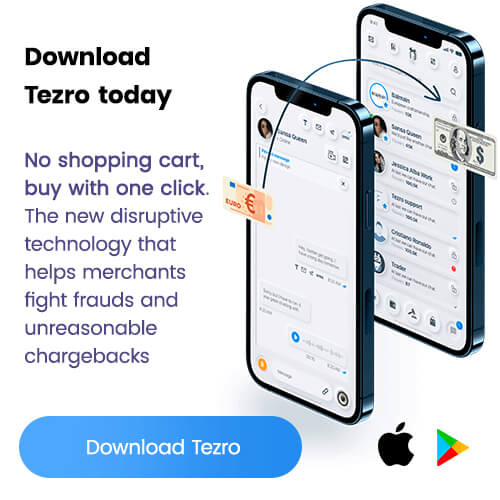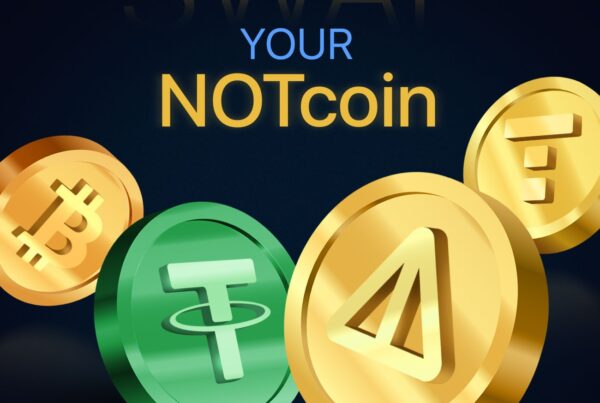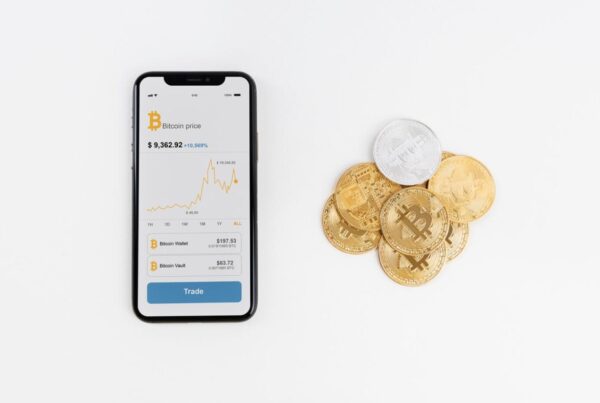Solana vs Ethereum is among the most talked about topics in the crypto space. This is because investors are constantly looking for the best blockchain platform to hold their assets and reap returns.
The two platforms, Solana and Ethereum, are both among the most popular platforms in the market today. Both have proven incredibly successful and have a huge user base, making them a great choice for investors. But how do they differ and compare?
In this comprehensive guide, we’ll dive deeper into the world of Ethereum vs Solana. We’ll look at each platform’s features, advantages, and disadvantages to help you decide which is better for your investment needs.
What is Solana?
Solana is an open-source, high-performance blockchain protocol designed to solve the scalability issues many existing blockchains face. The Solana platform’s unique architecture allows it to process multiple transactions per second and handle large transaction volumes. With its innovative consensus algorithm, Proof of Stake (PoS), Solana provides strong security and decentralization, allowing users to manage their digital assets securely.
Solana was launched in 2017 as an open-source blockchain platform. It is built to support the most demanding use cases for public and private blockchains by providing high throughput, low latency transactions, and a secure environment for decentralized applications.
Solana also employs its consensus algorithm, Proof of History (PoH), designed to prevent manipulation and ensure consensus. This is achieved by using the concept of a virtual clock which is updated in real time and is cryptographically secured by miners.
Solana relies on validator clusters instead of validator nodes, which makes it more fault-tolerant and energy-efficient than other blockchains. Validator clusters are groups of nodes working together to validate transactions and process them in a distributed manner.
What is Ethereum?
Ethereum is an open-source, public blockchain platform that allows developers to create and deploy decentralized applications (dApps). It was launched in 2015 and is the second-largest cryptocurrency by market capitalization. Ethereum uses its own programming language, Solidity, to create smart contracts and decentralized applications. Ethereum has become the go-to platform for launching new tokens or coins.
Ethereum is powered by its own cryptocurrency, Ether (ETH). The main purpose of Ether is to pay for transactions on the Ethereum network, which is facilitated by miners who are compensated with Ether tokens in return for their work.
Ethereum’s blockchain is based on the proof-of-work consensus algorithm. This algorithm enables miners to prove that they have performed a certain amount of work in order to validate transactions and add them to the blockchain. It provides a secure and tamper-proof environment for transactions to take place.
Something worth noting is that Ethereum is currently in the process of transitioning from a proof-of-work (PoW) consensus algorithm to a proof-of-stake (PoS) algorithm, known as Casper. This could potentially lead to increased scalability, security, and energy efficiency on the Ethereum network.
Ethereum is consistently evolving and introducing new features to its platform. One of the most recent additions is Ethereum 2.0, which is expected to significantly improve scalability and performance on the network.
Solana vs. Ethereum: What are the Differences?
There are several differences between Solana vs. ETH. They include:
Consensus Mechanism
One of the biggest differences between Solana vs. Ethereum is the consensus mechanism. Solana utilizes a unique consensus algorithm, Proof of History (PoH), based on a virtual clock and cryptographically secured by miners. It also uses Proof of Stake (PoS) as an additional layer of security.
Ethereum, on the other hand, employs a proof-of-work consensus mechanism. As mentioned previously, Ethereum is currently transitioning to a proof-of-stake algorithm.
Both of these consensus mechanisms have their own pros and cons. PoH is extremely efficient and can process thousands of transactions per second without sacrificing security. Proof-of-work requires much more computing power to confirm the same amount of transactions. However, both consensus mechanisms offer great security.
Transaction Speed
Another key difference between Solana vs. Ethereum is their transaction speed. Solana’s consensus algorithm and lightning-fast Proof of Stake (PoS) verifiers allow it to process up to 65,000 transactions per second (TPS). Ethereum can only handle an average of 15 TPS with its current design.
The transaction speed is determined by the consensus algorithm and other blockchain parameters. Apart from PoH and PoS, Solana uses a Tower Byzantine fault-tolerant (BFT), a cluster-based network protocol that eliminates the need for blockchain nodes to agree on the same data set. This helps Solana process transactions much faster than Ethereum.
Decentralization
We can’t talk about Solana vs. Ethereum and fail to mention decentralization. This is blockchain technology’s core principle, making it secure, immutable, and transparent.
Ethereum is arguably one of the most decentralized blockchains. It is governed by its own governing protocol – Ethereum Improvement Proposal (EIP), and runs on a decentralized public network of computers called nodes.
On the other hand, Solana uses a permissionless Proof-of-Stake consensus model that requires validators to stake their funds to participate in the network consensus process. This incentivizes validators to act honestly and add blocks in a timely manner.
Therefore, as far as decentralization goes, both Solana and Ethereum offer their own unique approaches to providing secure blockchain networks. However, Ethereum’s approach offers more decentralization than Solana.
Transaction Fees
Solana vs Ethereum transactions forms another comparison point. Regarding transaction fees, Ethereum has the highest at an average of $1-2 per transaction. This is due to its proof-of-work consensus mechanism and high demand for transactions on its network.
Solana’s Proof of History (PoH) algorithm allows it to process thousands of transactions with low fees, making it much cheaper than Ethereum. It has no minimum fee, so users can pay whatever amount they deem necessary for their transactions.
Let’s talk a little bit about Solana vs Ethereum gas fees. Gas fees are fees that users pay for executing smart contracts on the Ethereum network. The fees are determined by the complexity of the contract and the type of computations required.
Solana has minimal gas fees (about $0.0000014 per transaction) for executing smart contracts. This is mainly because it does not require miners to be paid and instead uses validators that are incentivized with rewards for participating in the consensus process.
On the other hand, Ethereum requires high gas fees (about $0.09 per transaction) because of its proof-of-work consensus algorithm. The miners need to be compensated for their efforts in order to keep the network secure and running smoothly.
Therefore, Solana is the way to go if you’re looking for a blockchain platform with low transaction costs.
Network Size
Another major difference between Solana and Ethereum is network size. Currently, Ethereum has the largest number of nodes, with almost 28,000 nodes around the world. This makes it one of the most secure and reliable networks in terms of decentralization.
On the other hand, Solana has a much smaller network with only 3,400 active validators worldwide. They are spread across six continents and used for network consensus and transaction processing.
Another interesting comparison point between Solana and Ethereum in terms of network size is the blockchain size. Ethereum’s blockchain has 389GB, which includes the current state, history of all transactions, and smart contracts.
On the other hand, Solana’s blockchain size is much smaller at only 1GB. This is due to its PoH algorithm, which allows it to store only a few blocks rather than the entire ledger of transactions.
Therefore, Ethereum is still the clear leader when it comes to network size.
Market Cap
Solana market cap vs Ethereum market cap has been a topic of debate for some time now. Ethereum is the second-largest cryptocurrency in terms of market capitalization. At the time of writing, Ethereum has a market cap of around $199.89 billion.
Solana, on the other hand, has a much smaller market cap of $8.4 billion. This is mainly because it is still relatively new and is yet to gain mass adoption in the crypto community.
The market cap is an important metric for investors to consider when choosing between the two blockchains. Ethereum’s larger market cap makes it a much safer bet as an investment. However, this doesn’t mean you should discount Solana, as its potential for growth is still immense.
Defi Ecosystem
DeFi (decentralized finance) is a rapidly growing industry that leverages blockchain technology to offer financial services. Ethereum has the most comprehensive DeFi ecosystem of any blockchain platform, with hundreds of projects and applications built on its network.
The DeFi projects on the Ethereum blockchain are powered by its native token, Ether (ETH). This token is used to pay transaction fees and access various services on the network.
Solana is steadily catching up in the DeFi space. It has recently launched the Serum protocol, which facilitates decentralized trading and allows users to access a range of financial services on the Solana network.
Solana’s native token, SOL, is used to pay fees and access services within its DeFi ecosystem. It is also used to stake and earn rewards within the network. SOL tokens can be easily exchanged for other cryptocurrencies or fiat currencies.
NFTs
NFTs (non-fungible tokens) are digital assets that are unique and indivisible. They are used to represent items such as artwork, collectibles, and digital gaming assets. NFTs are stored on a blockchain and are often used to facilitate peer-to-peer transactions.
Talking about Solana NFTs vs Ethereum NFTs is integral to discussing these two blockchain networks. Ethereum is the leader in NFTs, with its ERC-721 and ERC-1155 token standards widely used for creating and trading digital assets.
ERC-721 tokens are one-of-a-kind and can represent unique items such as artwork, collectibles, and digital gaming assets. ERC-1155 tokens are fungible and can represent multiple copies of the same asset. This includes in-game items, virtual avatars, and event tickets.
Solana is also gaining ground in the NFT space with its own SVM (Solana Virtual Machine) token standard. This token standard allows developers to create and trade digital assets on the Solana network.
Solana’s SVM token standard is gaining traction in the NFT community as it is more efficient and cost-effective than Ethereum’s ERC standards. This could give Solana an edge over Ethereum in the near future.
Solana vs Ethereum: Which is More Popular?
When we talk about popularity, Ethereum is the elephant in the room. This is mainly due to its wide range of applications and the fact that it is the oldest smart contract platform.
Ethereum was the first blockchain network to introduce smart contracts and DeFi protocols. This gave it a massive head start over other networks, which allowed it to gain widespread adoption in the crypto community.
Since its inception in 2013, Ethereum has grown tremendously and is now the second-largest cryptocurrency in market capitalization. It’s trusted by millions of businesses and developers worldwide.
Solana is a relatively new entrant in the blockchain space, and its popularity has steadily increased over the past few years. Its main selling point is its scalability, which allows developers to build more complex applications on its network.
It also offers lower transaction fees than Ethereum, which makes it attractive for businesses and developers. This has attracted much attention from the crypto community and helped it gain some traction in the market.
It’s evident that Ethereum is currently more popular than Solana. Even though the status quo may remain for the next few years, Solana’s scalability and low cost could help it gain more traction in the coming days.
Frequently Asked Questions
Below are some of the most frequently asked questions about Solana Vs. Ethereum:
Is Solana More Secure than Ethereum?
The answer to this question is a simple no. Ethereum is among the most secure and reliable blockchain networks in the industry. This is due to its sophisticated network architecture, which makes it very secure from malicious attacks or hacks.
Some of the most advanced cybersecurity technologies are used to protect the Ethereum network. These include advanced cryptography, secure hardware, and more. They also have a team of experts constantly monitoring the network for potential threats.
Solana also has a robust security model. They use a wide range of security measures to ensure the network is secure. These include deterministic random beacons, flexible authentication protocols, and more.
However, Ethereum still has the edge over Solana regarding security due to its widespread adoption and support from the developer community.
Will Solana Be as Big as Ethereum?
Over the past few years, Solana has proven to be a viable alternative to Ethereum. It is becoming increasingly popular and gaining adoption in the crypto community due to its scalability, low transaction fees, and lightning-fast processing times.
However, it is still too early to say if Solana can one day become as big as Ethereum. This will depend on how the project continues to evolve, and whether or not developers continue to put their trust in the network.
It is likely that Solana will remain a strong contender in the blockchain space for years to come, but it is still too early to tell if it can reach the same level of popularity as Ethereum. However, the future looks bright for Solana and its potential is immense.
Which is faster: Ethereum or Solana?
Speed is one of the most important factors when choosing a blockchain. The last thing you want is for your transactions to take too long to be processed.
Solana has a clear edge over Ethereum when it comes to speed. It uses the Proof-of-History consensus mechanism, which allows it to process up to 65,000 transactions per second. This makes Solana one of the fastest blockchain networks in the industry.
Ethereum, on the other hand, is currently limited to around 15 transactions per second. This is due to its proof-of-work consensus mechanism, which requires more time and resources to process transactions.
Even though Ethereum is constantly improving its speed and scalability, it may take some time before it can match the speeds offered by Solana.
So, which blockchain is better?
The answer is not straightforward. While Ethereum has a larger user base and established network, Solana offers faster transactions and greater scalability potential. Ultimately, the best platform for you depends on your needs and preferences.
It may be beneficial to use both platforms together to enjoy the benefits of both networks. Use Ethereum for its reliability and Solana for its speed and scalability. Rely on both networks to improve the efficiency of your transactions and operations.
Whichever platform you choose, remember that both Ethereum and Solana have their own strengths and weaknesses. Evaluate these networks carefully before making a decision. Consider each network’s features and decide which one will constantly appear at the helm of your priority list.
The future is quite promising for both networks, and it will be exciting to see how they grow in the coming years. Stay tuned for more developments in this ever-evolving space.
Key Takeaways
- Ethereum and Solana are what are known as smart contract platforms.
- Ethereum has the highest at an average of $1-2 per transaction.
- ETH is more popular than Solana because it has been around longer and had more time to grow.
- Solana can process up to 65,000 transactions per second, while Ethereum can handle approximately 30 transactions per second.
Final Thoughts
Solana and Ethereum are both promising blockchain networks in the industry. They have certain similarities, such as their open-source codebase and decentralized structure.
However, their differences lie in their goals, scalability solutions, and transaction speed.
Nonetheless, you can keep your Ethereum and Solana assets completely secure and store them in the Tezro app. Download it here and take advantage of a fully encrypted messaging system as well, to communicate with your friends, clients, or acquaintances.















